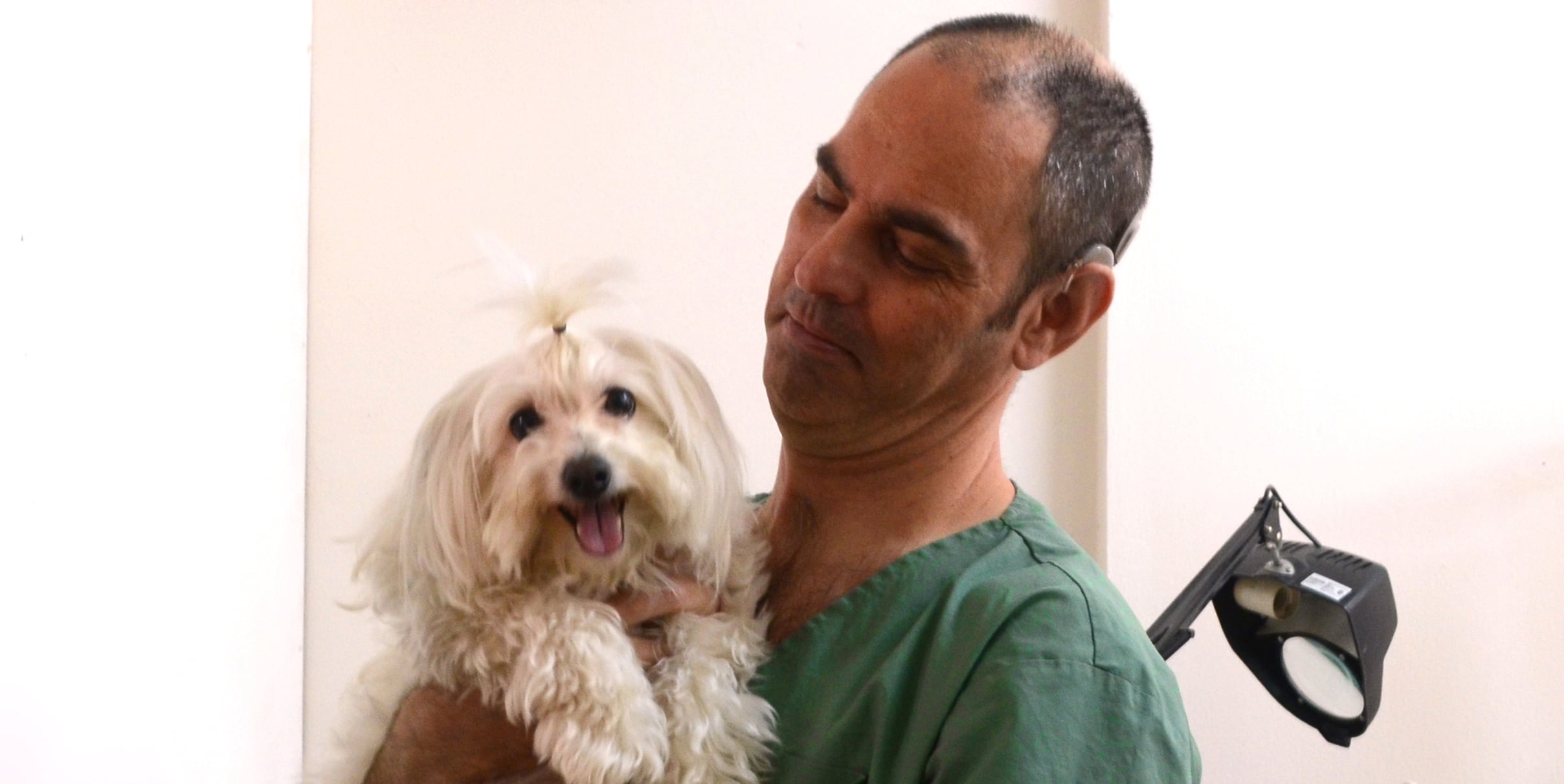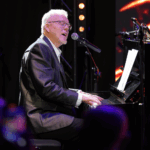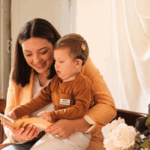MED-EL
Published May 08, 2019
Meet Esteban, An Inspirational Vet With Cochlear Implants

Esteban López has had hearing loss since he was baby. Using hearing aids, he succeeded at school and followed his dreams all the way to veterinary school. But even with the strongest hearing aids, he struggled to hear people (and animals!) clearly at work. It was then that he decided to get cochlear implants.
Now, his work as a vet is easier than ever before, he is learning a new language and he even has a special map for his stethoscope! We asked him to tell us more about his journey to cochlear implants and his plans for the future.
I’m Esteban López. I’m 45 years old, from Argentina, and have been a vet since 2009. As I loved animals from my childhood I wanted to be a vet. It was a really painful path. Because I was born deaf, my time at school and university was hard. Nevertheless, I achieved my career goal.
Growing Up With Hearing Loss
Hearing loss has affected me in many ways. Growing up I was bullied by my schoolmates, and experienced the indifference of teachers and the idleness of school masters. But luckily I was able to successfully complete primary and high school.
The first real difficulty came when I was at veterinary school and needed to use a stethoscope. It was impossible for me to hear heart or lung sounds. I happened to find an old electronic one from Japan which worked quite well. I was able to connect it to my hearing aids with a Bluetooth device.
From Hearing Aids to Cochlear Implants
I used hearing aids since my diagnosis at the age of three. Because my right ear was considered “non-functional”, I only used it in my left ear. It wasn’t until I was 34 that I got a high-power hearing aid on the right side. This only improved my hearing performance a little; it did not help me to distinguish sounds. I was always looking for the most powerful hearing aids to help me to understand speech better.
For a long time, I was unsure about cochlear implants. It was when I was at an event run by another cochlear implant brand that I started to really think about getting a CI. I met a lot of implanted people and was surprised how well they could hear and how it had changed their lives.
Back in the city, I went to the office of my audiologist, Gabriela Dotto, who had been suggesting I get a CI for a long time. At last, I agreed with her and decided to get them. She recommended MED-EL, which I had never heard about before. That same night, I sat in front the computer and found everything I needed. I was fascinated with MED-EL’s history and the advances they had made. At that moment, I decided to go for a MED-EL implant and today I am very happy.
Cochlear Implant Surgery and Activation
My first surgery was on the right ear in January 2018 at the Rosario Private Hospital, with ENT Surgeon Dr. Lucas Comelli. This surgery lasted longer than expected due to the abnormal position of the cochlea and the small size of the round window, which slowed down the surgery. From that moment, the recovery time was relaxed, with obligatory house rest for five days. 21 days after the surgery the stitches were removed and 30 days later my implant was activated.
My first activation was strange… I felt electricity. Also, I had expected to hear immediately, but it was not like that.
I had my second surgery in September last year. This activation was very different from the first. I began to feel sounds and voices, as they sounded the same for the first few days. Then things became clearer and I was able to distinguish other people’s voices.
The biggest change was when I heard sounds with my right ear, which was practically silent for almost 44 years. I can make out the sound of the letter “S” better than ever. The distinction of words is almost perfect, without “delay”, and I can even talk on the phone—the first time I spoke on the phone was 21 days after turning on my left implant!
Improved Work Life
My implants help me a lot at work, especially in noisy environments. They allow me to distinguish words more easily and even speak better: now I do not speak as loudly or as nasally as before, but lower and clearly. My colleagues and pet owners know that I am implanted and that makes my job easier.
I even have a special map for my stethoscope! My audiologist Gabriella Dotto created one to use exclusively with the electronic stethoscope. Basically, it adjusts the electrodes for bass and treble, since the heart sounds are fundamentally bass (murmurs) with a very ephemeral portion of treble sounds (such as valve closures).
I connect it to my SONNET with the red Direct Audio Input cable and this delivers all the audio (90% audio and 10% mic). A very quiet environment is also necessary as any ambient noise will be picked up by the stethoscope.
Of course, there are challenges. I’m learning German, and am now starting my third course. There was a period just over a month after the first activation that I had a hard time distinguishing German phonetics such as ä, ö and ü. But thankfully, my classmates and my teacher helped me to understand everything and even wrote the words I didn’t understand on the blackboard.
Now I have both sides implanted, I hope to be able to finish my German course and to push my own limits!
Thanks, Esteban!
Want to read more stories like Esteban’s? Check out Rod’s journey from hearing aids to cochlear implants.
Have you heard about SONNET 2? Discover how our latest cochlear implant audio processor is made for you.
Read all about getting a cochlear implant as an adult.
MED-EL
Was this article helpful?
Thanks for your feedback.
Sign up for newsletter below for more.
Thanks for your feedback.
Please leave your message below.
Thanks for your message. We will reply as soon as possible.
Send us a message
Field is required
John Doe
Field is required
name@mail.com
Field is required
What do you think?
MED-EL


